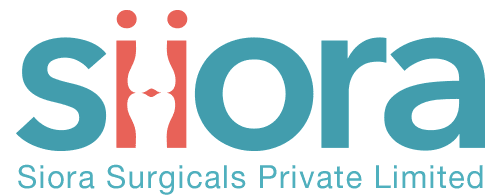The use of Internal Fixator Plates is from very early times to fix the bones internally. The locking plates serve to maintain length, rotation, and angulation at the fracture. Initially, there were Sherman plates, which used self-tapping screws. Then came the Broad, Narrow, and Small plates of AO type. The use of compression devices was there to give a rigid internal fixation.
There used to be cortex to cortex union with no visible callus formation. Extensive dissection was there to achieve an anatomical reduction. Stripping of the periosteum was merciless. At that time the biological treatment concept was not there. The heavy plates tightened to fix on the bone. The area under the plate lost its periosteal blood supply and became avascular. The friction between the undersurface of the plate and bone produced the stability. The avascular bone corroded and the holes in bones for screws got osteonecrosis and loose hence they failed to hold till union quite often.
There was an incidence of sterile sequestrum formation in the avascular bone. The process of fracture union used to get delayed till they were revascularized by creeping substitution. Till then immobilization of the limb was necessary.
Next came Dynamic Compression plates (DCP). Which due to its special hole pattern produced compression without a compression device and the concept of extra-periosteal plate came. Still, there was the avascular area under the plate. Which Low Contact Dynamic Compression Plate (LCDCP) reduces further. Here the avascular area under the plate was less. It was important to take care to avoid unnecessary periosteal stripping. Hence the union was quicker and better.
With these principles in mind, the DCP and LCDCP reduced the fracture healing time and there was some callus formation. There was consequent early mobilization and less amount of Fracture disease.
Once the true nature of these events was uncovered, the priorities changed from mechanical stability to biology. The biological internal fixation or bio-buttress fixation is one that makes sense from the biological point of view. Blind, subcutaneous, or submuscular insertion of an implant like a bone plate via a minimal surgical approach to preserve vascularity and fixing it by the newer aiming and stabilizing technologies to achieve elastic flexible fixation is part of this protocol. It took some more time to come with the concept of the internal fixator.
The healing pattern of bone is more natural with visible callus formation, and its strength returns early since live bone heals in a shorter time than creeping substitution of dead bone. The locked internal fixation plates! (LIFE) represents a novel, bio-friendly approach to internal fixation. It resembles a plate, but its biological and mechanical characteristics are different and it functions rather like a fully implanted external fixator, even in its healing pattern. An external fixator causes the least vascular damage in comparison to intramedullary nailing or conventional plate fixation.
This is the LCP. These plates were custom made for different parts of bones and areas. This was to tackle even the periarticular fractures. These plates were also slotted in the undersurface to reduce the amount of periosteal damage. The holes had an option of fixation with two types of screws. The first one was a regular cortical or cancellous screw that fixed the plate to the bone in the desired position, the other was a locking option. They have a guide to fix the direction of the screws to the plate.
The holes are having threads as well as on the screw heads so that on tightening the screws it fixed to the plate without producing unnecessary compression of the plate on the bone.
The healing pattern of bone is more natural with visible callus formation, and its strength returns early since live bone heals in a shorter time than creeping substitution of dead bone. The locked internal fixation plates (LIFE) represents a novel, bio-friendly approach to internal fixation. It resembles a plate, but its biological and mechanical characteristics are different and it functions rather like a fully implanted external fixator, even in its healing pattern. External fixator causes the least vascular damage in Comparison to intramedullary nailing or conventional plate fixation.








